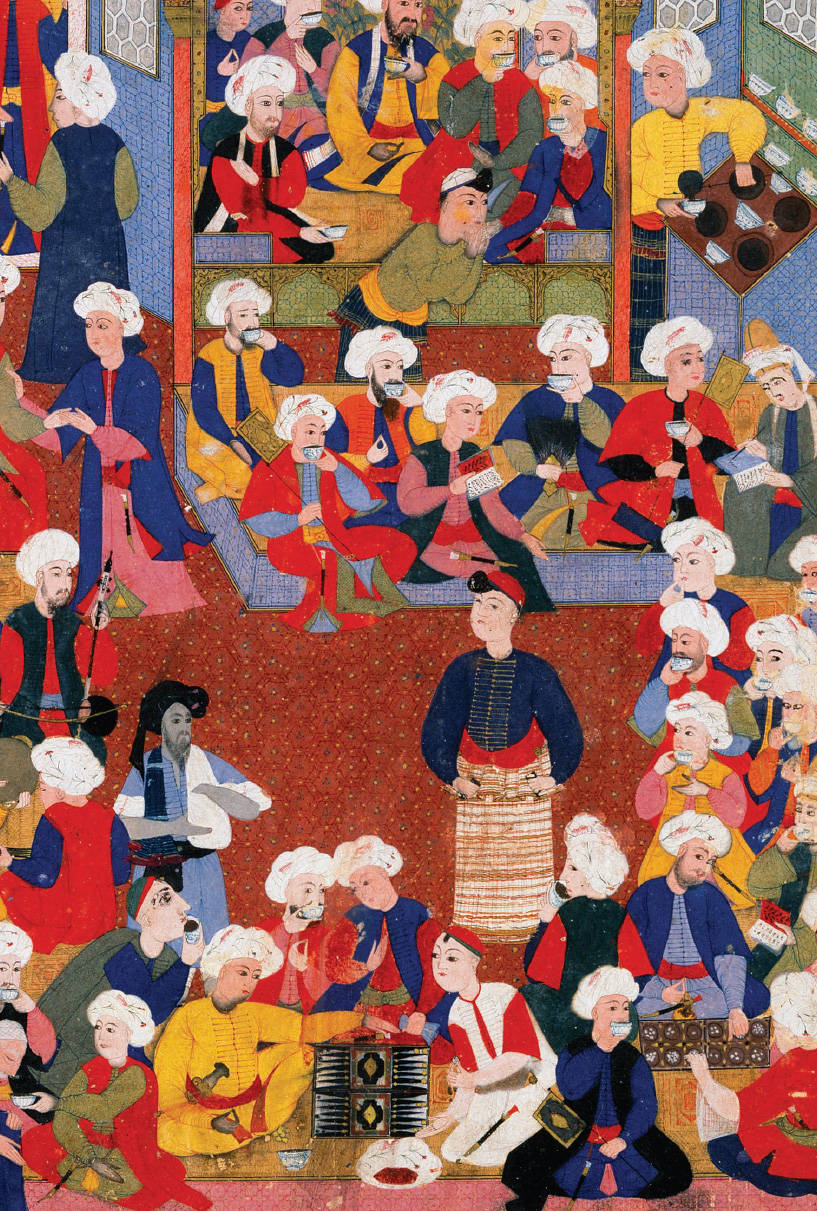Visual Source 14.3
An Ottoman Coffeehouse
Europeans, of course, were not the only people to embrace foreign tastes newly available in the early modern era. Tobacco and coffee, like tea, soon found a growing range of consumers all across Eurasia. Originating in the Americas, tobacco smoking spread quickly to Europe and Asia. Well before 1700 it had become perhaps the first global recreation. In the Ottoman Empire, as elsewhere, it provoked strenuous opposition on the grounds that it was an intoxicant, like wine, and was associated with unwholesome and promiscuous behavior. It was also associated with coffee, which had entered the Ottoman Empire in the sixteenth century from its place of origin in Ethiopia and Yemen. Coffee too encountered considerable opposition, partly because it was consumed in the new social arena of the coffeehouse. To moralists and other critics, the coffeehouse was a “refuge of Satan,” which drew people away from the mosques even as it drew together all different classes. Authorities suspected that coffeehouses were places of political intrigue. None of this stopped the spread of either tobacco or coffee, and the coffeehouse, in the Ottoman Empire and in Europe, came to embody a new “public culture of fun” as it wore away at earlier religious restrictions on the enjoyment of life.42
Visual Source 14.3 is a sixteenth-century miniature painting depicting a Turkish coffeehouse in the Ottoman Empire.

Question
What activities can you identify in the painting?
Question
Would you read this painting as critical of the coffeehouse, as celebrating it, or as a neutral description? Notice that the musicians and those playing board games at the bottom were engaged in activities considered rather disreputable. How would you describe the general demeanor of the men in the coffeehouse?
Question
Notice the cups that the patrons are using and those stacked in the upper right. Do they look similar to those shown in Visual Source 14.1? Certainly Ottoman elites by the sixteenth century preferred Chinese porcelain to that manufactured within their own empire.43